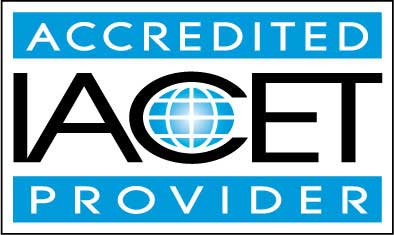Course Description
Deciphering Business Through its Financial DNA: Mastering the Art of Accounting
In the dynamic world of business, accounting isn't just numbers and ledgers; it's the very DNA, revealing the health, vitality, and potential of a company. Yet, truly understanding this DNA means diving deep into its core – the financial statements and reporting systems. These aren't mere documents, but rather strategic communication channels that unravel the intricate tales of a company's financial trajectory and vitality.
Why This Course Is A Game-Changer:
- Comprehensive Insight: Navigate through the maze of business finance, from foundational accounting stages to intricate GAAP principles.
- Tools of Financial Revelation: Delve into essential financial statements like the balance sheet, income statement, and more, demystifying their roles in painting a comprehensive financial portrait of a company.
- Applied Analysis: Journey beyond basic understanding to applied financial statement analysis. Learn the dance of cash flow, its rhythmic movement, and profound impact on business health.
- Ratio Revelations: Unravel the power of financial ratio analysis, a critical compass guiding investors towards informed, insightful investment decisions.
- Detective Skills for the Modern Business World: Step into the intriguing realm of accounting fraud. Understand its mechanisms, identify red flags, and delve into the dark arts employed by those who distort financial realities for deceptive gains.
Course Highlights:
- Building Blocks: Set your foundation with the fundamental principles of accounting and GAAP.
- Financial Statement Mastery: Develop expertise in reading, interpreting, and analyzing balance sheets, income statements, and other pivotal financial documents.
- Cash Flow Chronicles: Chart the journey of cash flow, understanding its ebbs and flows and the profound stories it tells about a company's health.
- Investor's Insight: Harness financial ratio analysis, turning raw numbers into strategic insights that empower investment choices.
- Guardians of Authenticity: Dive into the world of accounting fraud detection, equipping yourself with skills to safeguard businesses from deceptive practices and ensure financial integrity.
Empowering Decision-Makers:
Financial acumen transcends mere numbers; it's the bedrock upon which businesses are built, grown, and sustained. This course isn't just for aspiring accountants. It's for managers envisioning growth, investors seeking clarity, and any individual aiming to navigate the business world with confidence and competence.
Join us on this enlightening journey, where we transform the seemingly complex world of financial statements into a treasure trove of insights, strategies, and opportunities. Unlock the true language of business and equip yourself with the tools to interpret, analyze, and thrive in the financial landscape of tomorrow. Your voyage into mastering the financial DNA of business begins here.
- Completely Online
- Self-Paced
- 6 Months to Complete
- 24/7 Availability
- Start Anytime
- PC & Mac Compatible
- Android & iOS Friendly
- Accredited CEUs

Learning Outcomes
- Identify how GAAP principles, such as the historical cost principle, influence the preparation and reporting of financial statements.
- Recognize and categorize the primary components of financial statements including assets, liabilities, and equity in a balance sheet.
- Identify and describe the two primary types of SEC filings required for U.S. publicly traded companies, including filing timelines and associated forms.
- Recognize and classify the four main types of financial statements used during a standard reporting period, including their purpose and components.
- Calculate net income from an income statement using key formulas for gross margin and operating expenses with 95% accuracy.
- Identify and differentiate between single-step and multi-step income statement formats, using their distinct components and structures.
- Define and describe the three main components of a balance sheet: assets, liabilities, and stockholders' equity.
- Prepare and interpret a common-size balance sheet by converting each balance sheet item into a percentage of total assets.
- Analyze WH3 Corp's stockholders' equity statement, including concepts like treasury stock, par value, and additional paid-in capital, to understand changes in stockholders' equity.
- Explain the structure and purpose of the Statement of Stockholders' Equity in evaluating a corporation's financial health and ownership profile.
- Define and differentiate the three categories of cash flows—operating, investing, and financing—in a cash flow statement.
- Demonstrate the ability to calculate free cash flow using cash flow from operations, capital expenditures, and dividends paid.
- Describe the relationship between working capital and cash flow as it pertains to a company's ability to handle short-term liabilities.
- Demonstrate mastery of lesson content at levels of 70% or higher.
Assessment Guide
| Assessment | Points |
|---|---|
| Motives for Taking this Course | 2 points |
| Exam 1 | 10 points |
| Lesson 2 Activity | 1 points |
| Exam 2 | 10 points |
| Exam 3 | 9 points |
| Exam 4 | 10 points |
| Exam 5 | 10 points |
| Lesson 6 Activity | 1 points |
| Exam 6 | 10 points |
| Lesson 7 Activity | 1 points |
| Exam 7 | 10 points |
| Lesson 8 Activity | 1 points |
| Exam 8 | 10 points |
| Exam 9 | 10 points |
| Lesson 10 Activity | 1 points |
| Exam 10 | 10 points |
| Lesson 11 Activity | 1 points |
| Exam 11 | 10 points |
| Exam 12 | 10 points |
| Final Exam | 58 points |


